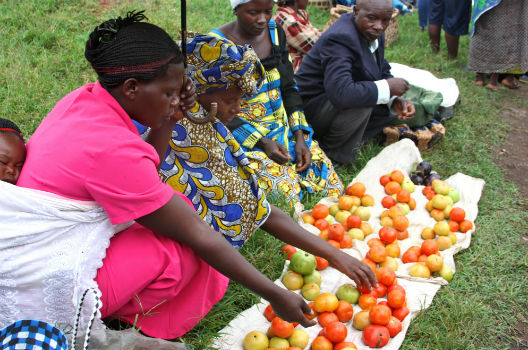 Earlier this month, Kenya drew international condemnation by announcing the closure of Dadaab refugee complex and the repatriation of its 330,000 mostly Somali residents by November of this year. It’s not the first time Kenya has threatened to close the camp, but the political leadership is likely emboldened by the European Union’s plans to limit its own intake of refugees through a controversial deal with Turkey. While the Kenyan government has cited the protracted economic burden and alleged security risk that the complex presents, closing Dadaab will be far more complicated and costly than Kenya expects.
Earlier this month, Kenya drew international condemnation by announcing the closure of Dadaab refugee complex and the repatriation of its 330,000 mostly Somali residents by November of this year. It’s not the first time Kenya has threatened to close the camp, but the political leadership is likely emboldened by the European Union’s plans to limit its own intake of refugees through a controversial deal with Turkey. While the Kenyan government has cited the protracted economic burden and alleged security risk that the complex presents, closing Dadaab will be far more complicated and costly than Kenya expects.
In contrast, Kenya’s neighbor Uganda is quietly pursuing a radical, assimilationist approach to its refugee challenge and it appears to be working well. Around 510,000 refugees—mostly from South Sudan, Burundi, and the Democratic Republic of the Congo (DRC)—currently live in Uganda, making the country the third-largest refugee host in Africa after Ethiopia and Kenya. But, unlike the continent’s other host countries that confine refugees to expansive camps, Uganda provides registered newcomers with small plots of land in rural refugee villages. With help from the international community, Uganda gives refugees are access to the same social services as local Ugandans and encourages them to find jobs. They’re also allowed to move relatively freely and permanently leave the village if they feel they can support themselves elsewhere.
The United Nations Refugee Agency (UNHCR) has heralded the policy as “progressive and forward-thinking,” and, in terms of reducing dependency on humanitarian aid, the results have been impressive. According to a study by Oxford’s Humanitarian Innovation Project, only one percent of refugees in Uganda are completely dependent on aid. Seventy-eight percent of refugee households in Kampala receive no assistance from any aid agency.
In many cases, refugees have become a boon to local communities, starting small businesses that benefit Ugandans and pay taxes. In Kampala, for example, of the refugee businesses large enough to hire people other than family members, forty percent of employees were Ugandan nationals. These businesses also supply Ugandan consumers—sixty-five percent of refugee business in Kampala, and twenty-six percent in rural areas, report that Ugandans are their most important customers.
At first glance, it’s not entirely clear why Uganda’s policies are so dramatically different from those of its neighbor. Uganda is certainly not richer—its GDP per capita is around half that of Kenya—and has also had problems with terrorism, including the 2010 Al Shabaab attack in Kampala that killed seventy-six people.
What’s clear, though, is that Uganda’s political leaders haven’t pinned the country’s woes on the refugee population. While there have been limited reports of tension between refugees and locals, it has been kept to a minimum by both UNHCR’s concerted efforts to make sure international aid also benefits local Ugandan communities and by the refugees’ ability to engage Ugandans as equal economic partners.
Other countries hosting refugees would be wise to take note of the Ugandan approach. Scapegoating refugees may score politicians cheap political points. In Kenya, some contend that Dadaab’s closure represents a cynical attempt by politicians to bolster support before next year’s general elections. But, scapegoating may ultimately prove counter-productive both in terms of security and economics. Further alienating already vulnerable populations and increasing their dependency on aid is not a desirable outcome.
While providing refugees with plots of land is clearly not replicable in all contexts, the Ugandan model illustrates the benefit of providing refugees with access to livelihoods. Refugees that independently support themselves, and contribute to the economy, should be the best-case scenario for any host country. The Ugandan case exemplifies something that the international community has thus far struggled to do—bridge the divide between humanitarian assistance and international development aid.
Although many host countries remain afraid that allowing refugees to make a sustainable life for themselves will encourage them to stay indefinitely, experience shows that even when refugees are cloistered off in squalid camps, dependent on aid and not allowed to work, refugee situations often become protracted. Dadaab has existed in Kenya for the past twenty-five years. While Uganda’s policies are by no means perfect, the relative success of this model illustrates a common argument among refugee experts: refugees are only a burden if they are made to be one.
Looking forward to the evolving political challenges in Uganda’s neighborhood, the resilience of their refugee system remains in question. The World Food Programme recently sounded the alarm about increasing numbers and need of Burundian refugees escaping political violence in their home country, many of whom will come to Uganda. Stagnating peace talks and President Pierre Nkurunziza’s recent ultimatum for “armed gangs” to surrender in the next fifteen days suggest things will get worse before they get better. In the DRC, President Joseph Kabila has answered calls to organize the constitutionally mandated election of his successor with increased repression of the political opposition, threatening to catalyze wide-spread civil unrest. In South Sudan, despite a new unity government, violence continues. With donors’ priorities focused on Syrian refugees in Europe, it stands to be seen how well the Ugandan system will be able to accommodate any dramatic increases of those fleeing regional violence.
Julian Wyss is a Program Assistant at the Africa Council’s Africa Center. Follow him on Twitter at @JulianSWyss.
Image: Congolese refugees in Uganda's Rwamwanja settlement sell tomatoes (photo credit: EU/ECHO/Martin Karimi)

